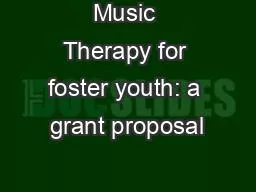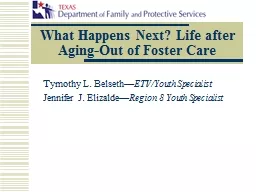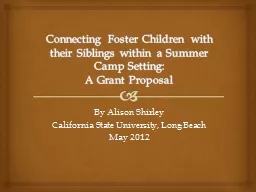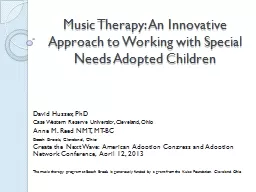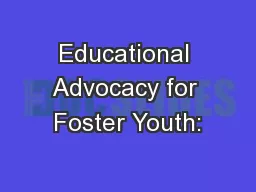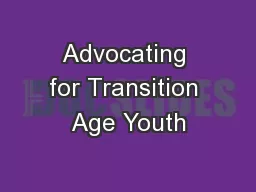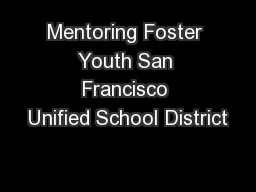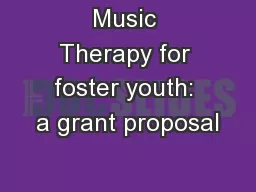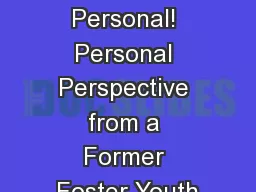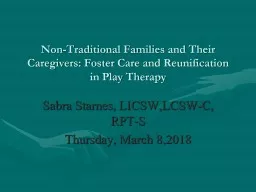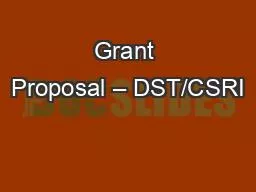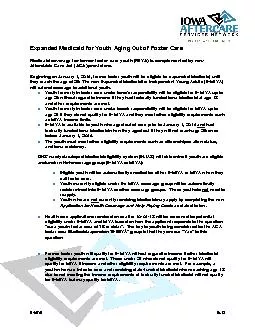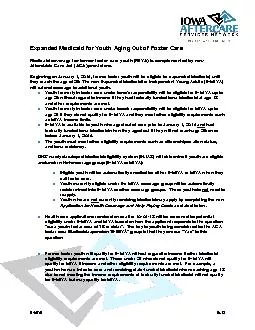PPT-Music Therapy for foster youth: a grant proposal
Author : test | Published Date : 2015-10-04
Dedrick Lenox California State University Long Beach May 2013 Statement of Problem There are at minimum 408425 children in the United States foster care system
Presentation Embed Code
Download Presentation
Download Presentation The PPT/PDF document "Music Therapy for foster youth: a grant ..." is the property of its rightful owner. Permission is granted to download and print the materials on this website for personal, non-commercial use only, and to display it on your personal computer provided you do not modify the materials and that you retain all copyright notices contained in the materials. By downloading content from our website, you accept the terms of this agreement.
Music Therapy for foster youth: a grant proposal: Transcript
Download Rules Of Document
"Music Therapy for foster youth: a grant proposal"The content belongs to its owner. You may download and print it for personal use, without modification, and keep all copyright notices. By downloading, you agree to these terms.
Related Documents

